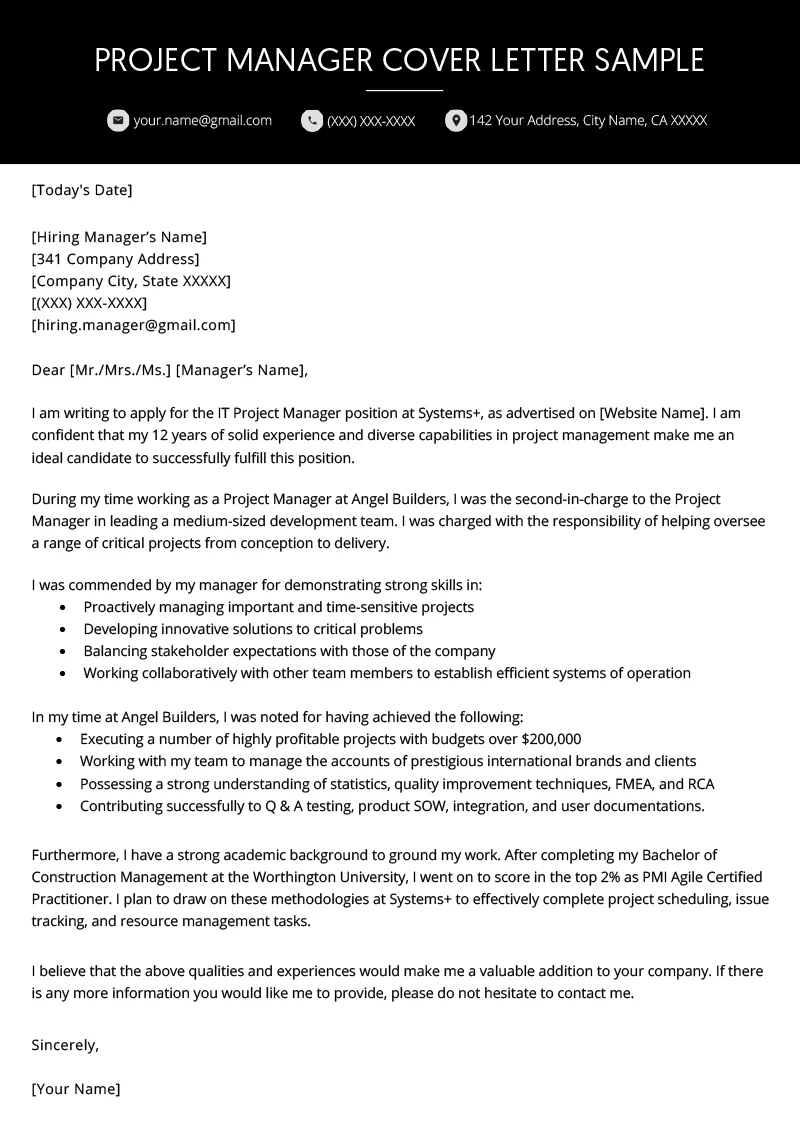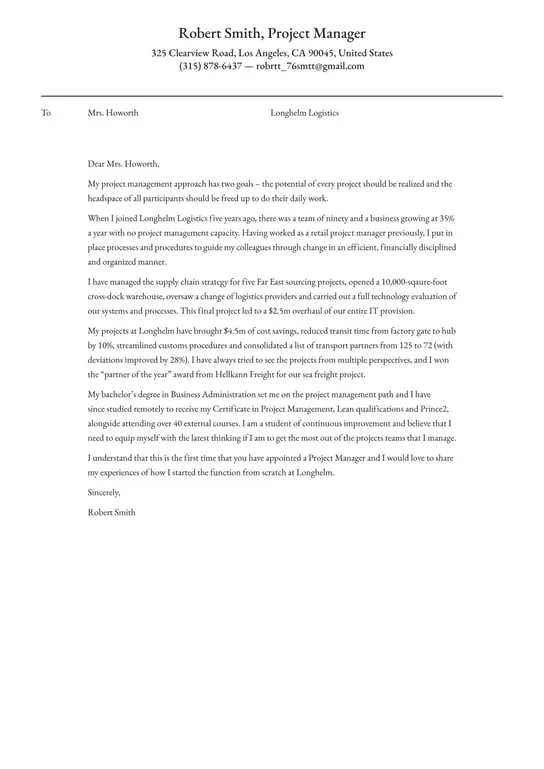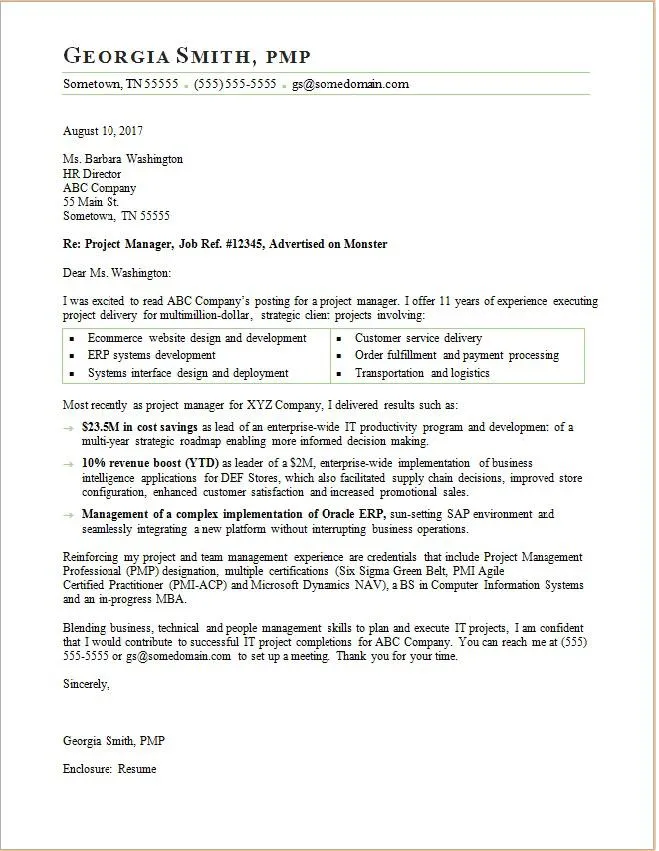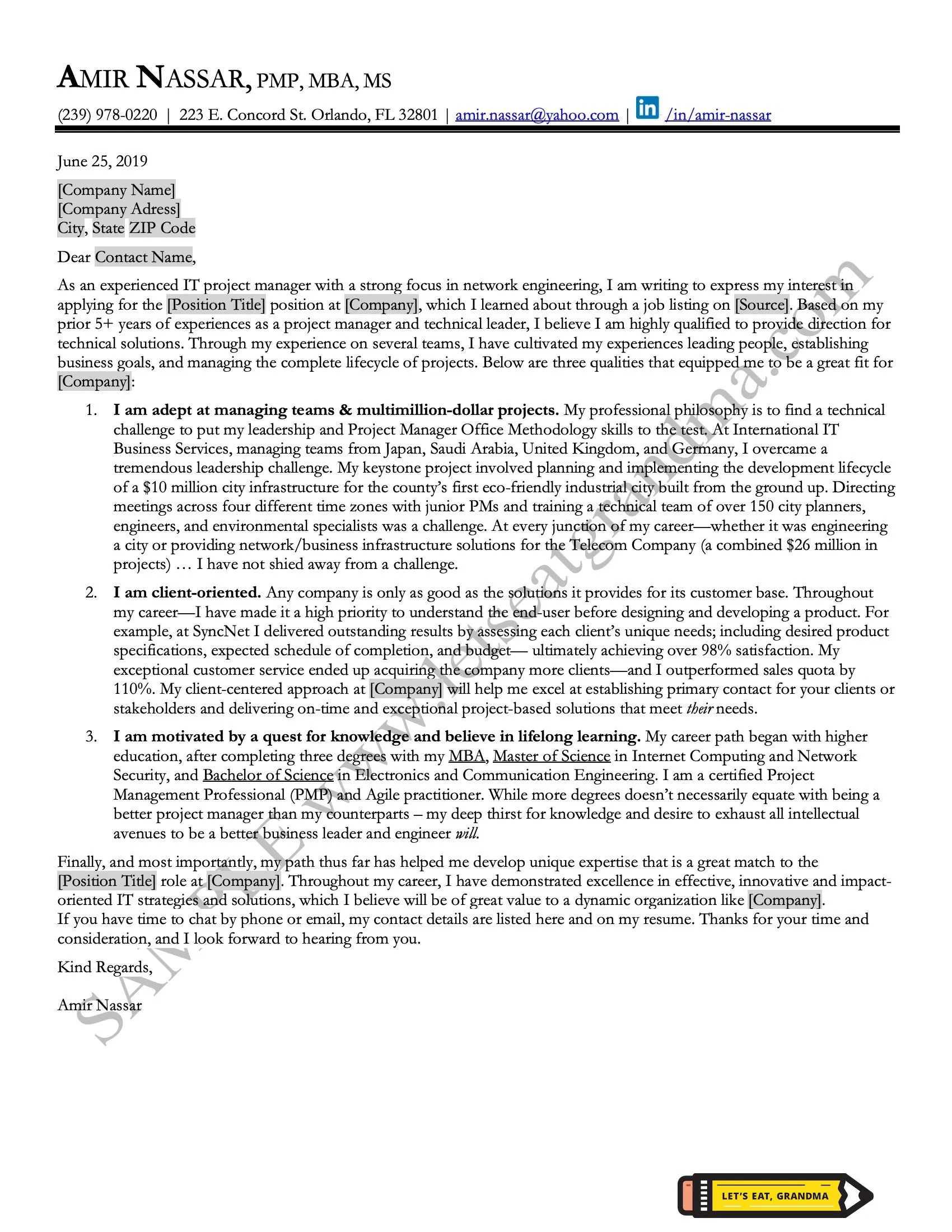Highlighting Your Project Management Skills
Your project manager cover letter is your first chance to impress a potential employer, so you must make it count. The most important thing is to showcase your project management skills effectively. Begin by clearly stating your core competencies. These might include project planning, risk management, budget control, team leadership, and stakeholder communication. Avoid generic statements, and instead, provide specific examples that demonstrate your proficiency in these areas. For instance, if you’re skilled in risk management, briefly describe a situation where you successfully identified, assessed, and mitigated a project risk, explaining the positive outcome. Remember, the goal is to show, not just tell, what you can do. Tailor your cover letter to each specific job application, carefully reviewing the job description for the key skills and requirements. Then, align your skills with those needs, ensuring the hiring manager can quickly see your suitability for the role. This targeted approach significantly increases your chances of getting noticed. Make your skills clear and simple.
Quantifying Your Achievements
One of the most impactful ways to make your cover letter stand out is by quantifying your achievements. Instead of simply stating that you managed projects, provide specific metrics that highlight your successes. For example, you might say, ‘Successfully delivered projects on time and under budget, resulting in a 15% cost reduction and a 20% increase in client satisfaction.’ Such concrete figures immediately demonstrate your value and give the hiring manager a clear understanding of your capabilities. Consider using percentages, dollar amounts, or other relevant data points to showcase your accomplishments. If you improved team efficiency, specify the percentage of improvement. If you streamlined a process, mention how much time or resources you saved. Always focus on outcomes and the benefits you brought to previous employers. This evidence makes your claims more credible and memorable. Be sure to back up any claims with specific examples or data.
Using Action Verbs

To create a dynamic and compelling cover letter, use strong action verbs. Action verbs bring your accomplishments to life and showcase your proactive approach to project management. Start each bullet point or sentence that describes your responsibilities or achievements with a powerful verb. Examples include ’led,’ ‘managed,’ ‘implemented,’ ‘developed,’ ‘streamlined,’ ‘achieved,’ ‘coordinated,’ ’negotiated,’ and ‘improved.’ For instance, instead of writing ‘Responsible for project planning,’ you might write, ‘Developed detailed project plans, outlining timelines, resource allocation, and budget management.’ This revised sentence is more engaging and provides a clearer picture of your skills. Action verbs are particularly effective when describing your experience, as they help the reader quickly understand your contributions. Avoid using passive voice, which can make your writing seem less impactful. By using strong, active verbs, you will make your cover letter more concise and will also make it stand out from a sea of generic applications.
Tailoring Your Cover Letter
A generic cover letter will likely end up in the trash. Tailoring your cover letter to each job application is crucial for demonstrating your genuine interest and suitability for the role. The first step is to thoroughly review the job description, paying close attention to the specific requirements, skills, and qualifications. Identify the key terms and keywords used in the job posting, then strategically incorporate those terms into your cover letter. This helps you align your skills and experience with the employer’s needs. This shows you’ve taken the time to understand their needs. For example, if the job description emphasizes experience with Agile methodologies, make sure to highlight your relevant experience. By demonstrating your targeted approach, you increase your chances of getting noticed. This also shows your attention to detail.
Researching the Company
Before you write your cover letter, conduct thorough research about the company and the specific role you are applying for. Visit the company’s website, read their ‘About Us’ page, and explore their recent news and projects. Understand their mission, values, and current goals. Look at their social media pages to understand more about their company culture and their employees. This will allow you to tailor your cover letter to show how your skills and experience align with the company’s needs and values. Mentioning specific projects or initiatives that resonate with the company’s goals can also demonstrate your genuine interest. Use the information you gathered during your research to tailor your cover letter so that you can demonstrate your understanding of the company’s challenges and how you can contribute to their success. This level of personalization will make your cover letter stand out and demonstrate that you’re serious about the opportunity.
Addressing the Hiring Manager

Always address your cover letter to a specific person, if possible. Generic greetings like ‘To Whom It May Concern’ are impersonal and can make your application seem less engaging. If you can find the hiring manager’s name (e.g., through LinkedIn, the company website, or by contacting the HR department), use it. Addressing the hiring manager by name shows that you have taken the time to research the company and the role, and that you are committed. If you cannot find a specific name, try to use a role-based greeting, such as ‘Dear Hiring Manager’ or ‘Dear [Department] Team’. Customize your greeting and your entire cover letter to create a positive first impression. You will seem more professional by demonstrating you know who is reading your cover letter.
Formatting and Presentation
The formatting and presentation of your project manager cover letter are just as important as the content. A well-formatted cover letter is easier to read, more professional, and shows attention to detail. Use a clean, professional font like Arial, Calibri, or Times New Roman. Keep the font size between 10 and 12 points. Ensure there is enough white space between paragraphs and sections to provide visual breaks, enhancing readability. Use bullet points to highlight key achievements, skills, and responsibilities. Maintain consistent formatting throughout the entire document, including headings, spacing, and bullet points. This will improve the overall visual appeal of your cover letter and makes it easier for the hiring manager to focus on the content. A well-structured cover letter shows your organized approach.
Keeping it Concise
Hiring managers are busy, so keep your cover letter concise and to the point. Aim for a maximum of one page, making sure that every word counts. Focus on the most relevant and impactful information, avoiding unnecessary details or repetitive statements. Clearly state your purpose in the first paragraph, quickly summarizing your key skills and qualifications. Use concise language and avoid jargon or overly complex sentences. Be sure to highlight your most significant achievements and tailor your letter to the specific job requirements. Keeping your cover letter concise makes it easy for the hiring manager to quickly grasp your qualifications and assess your suitability for the role. This demonstrates you are organized and respect their time.
Proofreading and Editing

Before submitting your project manager cover letter, carefully proofread and edit it. Errors in grammar, spelling, or punctuation can create a negative impression and undermine your credibility. Take the time to review your letter thoroughly. Look for any typos, grammatical errors, and inconsistencies in your writing. Consider using a grammar checker tool to help catch any mistakes you may have missed. Ideally, have a friend, colleague, or mentor review your cover letter as well. A second pair of eyes can often catch errors that you might have overlooked. The proofreading stage is crucial, ensuring your cover letter is polished and error-free. The final goal is to submit a professional document that reflects your attention to detail and commitment to excellence. A flawless cover letter demonstrates professionalism and attention to detail.
Call to Action
End your cover letter with a strong call to action. This is your chance to express your interest and make it easy for the hiring manager to take the next step. Clearly state your desire for an interview and how you can help the company. Reiterate your enthusiasm for the role and summarize why you are the perfect fit. Providing your contact information, including your phone number and email address, makes it easy for the hiring manager to get in touch with you. Also, include a simple statement that expresses your availability for an interview at their convenience. The call to action is what drives the application process forward. With a clear and compelling closing, you increase the likelihood of receiving an interview invitation, which is the ultimate goal of your cover letter. Conclude with a confident tone.
